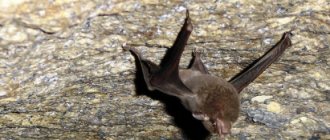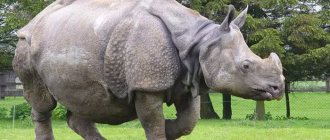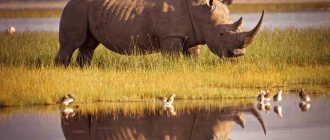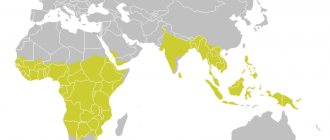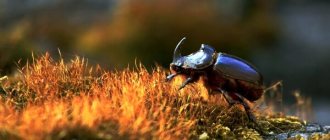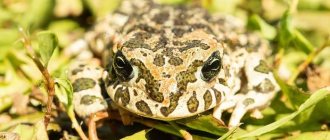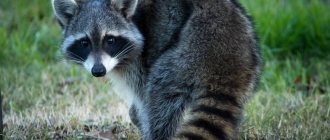The largest of all rhinoceros species . Known for its square upper lip, large two horns and incredible size, the white rhinoceros once roamed southern and northern Africa. At the beginning of the 20th century, the white rhinoceros population dropped to 50 individuals. Today, the white rhino demonstrates both the promise of conservation for the species and the incredible threats it still faces. While the southern white rhinoceros has seen its population rebound so strongly that it is no longer endangered, the northern white rhinoceros is now functionally extinct, with only two females remaining.
Appearance of the White Rhinoceros
If you look at the photo of the rhinoceros on this page, you will notice that the species is actually more grey. This is because the name “ white rhinoceros ” actually comes from a mistranslation! Dutch settlers in South Africa began calling this species of rhinoceros “veit,” which means “wide” in African.” This description referred to the unique square mouth of the white rhinoceros. However, English settlers mistranslated the name, instead calling the species “white rhinoceros!” When comparing white rhinos to another species found in Africa, the black rhino, the white rhino has a square mouth, while the black rhino has a more triangular mouth. The white rhinoceros has a number of distinctive physical characteristics, such as a large “hump” across its back. This hump is a muscle mass that evolved to support the species' massive head. Another key distinguishing feature of white rhinos is their size, which is the largest among the rhino species.
Reproduction
The female reaches full puberty at 6, and the male at 11 years. After this, it can produce offspring once every 3 years. A litter consists of one baby. It takes 18 months to bear a fetus. After birth, the offspring quickly stands up on its limbs and within 24 hours can move behind its mother, and after a week feed on grass on its own, and without giving up sucking milk for up to a year. The baby's weight is approximately 50 kg.
The peak of mating season occurs in mid-summer and early autumn. During this period, the male finds a female and begins to actively court her for several weeks, without letting anyone near her. Mating games among white rhinoceroses are playful and fun. They butt heads, run after each other, making characteristic sounds.
The white rhinoceros, compared to other individuals of this species, does not like to change its position. And they do not change the territory they have chosen.
White Rhino Weight
The white rhinoceros can weigh up to 3,600 kg (7,920 lb), making it the second largest land animal on earth after the elephant ! White rhinoceroses are large from birth, and a baby recently born at the San Diego Zoo exceeded the size of a fully grown human just 19 days after birth, when it weighed 193 pounds (87 kg). Males can grow significantly larger than females, reaching a maximum weight of almost 4 tons. Females tend to be significantly smaller, weighing on average about ¾ of the weight of a male when fully grown.
Continuation of the family line
In life, the white and northern white rhinoceros still keep many secrets and mysteries, not everything has been studied yet, for example, their reproduction is under a lowered curtain. This is unfortunate, because their numbers on Earth are decreasing, we need to help this species so as not to lose it completely.
Rhinoceroses are ready to breed at the age of about 8-9 years. The mating season falls from July to September. The female carries the cub for a whole year and a half, bringing only one baby at a time. After 24 hours, the cub is already running after its mother, after seven days it is nibbling grass, but in addition to green food, it sucks milk for a whole year. A female of childbearing age produces offspring every 3 years.
How fast does the White Rhino run?
For such a large species, the white rhinoceros has incredible acceleration and can reach speeds in excess of 30 miles per hour (about 48 kilometers per hour). For comparison, the fastest man in the world was Usain Bolt, who clocked up to 27 mph! The top speed of white rhinoceroses also exceeds that of other large African land mammals such as elephants or hippopotamuses . Why do rhinoceroses attack? This species has developed excellent hearing and sense of smell, but its vision is reported to be very poor and myopic. Running allows rhinos to protect themselves from unfamiliar objects. This can be very common from mothers protecting their calves and males protecting their territory.
Features of character and lifestyle
Photo: White rhinoceroses
At first glance, the rhinoceros may seem slow and clumsy due to its size, but if necessary, it can accelerate quite quickly and run some distance at a speed of about 40 km/h. Of course, he won’t be able to maintain high speed for a long time, but it looks very intimidating.
Rhinoceroses spend their days alone in their territories, which they choose once and for all their lives. Only very rarely can it happen that a lack of food will force a rhinoceros to look for new lands.
It is also very rare that rhinoceroses can unite in small groups, usually a species of white rhinoceros, but mostly live alone. The mother, having taught the cubs the basic things of life, drives him out of her territory and again remains alone.
The rhinoceros is primarily a nocturnal animal. They can devour vegetation all night long and sleep in the mud or pond during the day. Some species prefer to be active both during the day and at night. Although rhinoceroses have very thick skin, it can also dry out and burn in the sun, and they are also tormented by insects.
Rhinoceroses are helped to fight insects by birds that literally settle on their backs. These are wolves and buffalo starlings. They not only feed on insects and ticks from the back of the animal, but can also indicate danger. According to some reports, insects from the back of a rhinoceros are eaten not only by birds, but also by turtles, who are just waiting for the rhinoceros to sit in their puddle.
In general, rhinoceroses coexist peacefully with all other species of animals: zebras, giraffes, elephants, antelopes, buffaloes and even predators that are of little interest to adult rhinoceros. For this reason, rhinoceroses sleep very soundly and do not think about danger at all. At this moment, you can easily sneak up on them and remain unnoticed.
Interesting fact: If a rhinoceros senses danger, it will most likely rush to attack first. Therefore, this animal is dangerous for humans. Moreover, the most dangerous thing is a female with a cub - she will be very aggressive precisely because she will protect her baby with all her might.
White rhinoceros horn size
The white rhino's horn can grow to the largest size of any rhino species. In 2006, Dr. Nico van Stein measured a 150 cm (59 in) white rhino horn! The larger of the white rhinoceros's two horns is usually about 90 cm (35 in) long, while the second horn is smaller and usually does not exceed 60 cm (24 in). Unlike other species, whose horns are attached to their skull, rhinoceros horns are made of keratin, a material you also find in your fingernails! This also means that if a rhino's horns are cut off, they can grow back in about three years.
Difference from black rhinoceros
The main difference between a white and a black rhinoceros is that its upper lip is flat and wide, while in a black one it is pointed, like a proboscis. The structure of the lip of the first one corresponds to its purpose: the main food is herbaceous vegetation, not shrubs. The animal bites off vegetation close to the ground, and the keratinized sharp edge of the lower lip fully compensates for its missing incisors. —
White Rhino Habitat
White rhinoceroses are one of two species of rhinoceroses that live throughout Africa. Their preferred habitat is large grasslands, although increasingly their populations are concentrated in nature reserves where they can be protected. The white rhinoceros's northern range once spanned South Sudan, the Democratic Republic of Congo, the Central African Republic and Uganda. However, poaching has sharply reduced the range of northern white rhinos. Today, northern white rhinoceroses are extinct in the wild, except for two remaining females, which were introduced to the Ol Pajeta Conservancy in Kenya. The southern white rhinoceros historically ranged from South Africa to Botswana, Namibia, Zimbabwe and other neighboring countries. Today, their populations are concentrated in a number of national parks, such as the Kruger National Park, where an estimated 8,000 to 9,000 white rhinoceroses live in one nature reserve.
Is there potential for a revival of the species?
Despite the catastrophic situation, there is hope for the preservation of the northern species. It appeared relatively recently, when two viable embryos were obtained. If we provide them with proper protection in the future, the population can be restored at least partially.
For example, in one of the national parks in India it is allowed to shoot without warning at any person holding a weapon if he is not wearing the uniform of an employee of this park.
What predators hunt the white rhinoceros
As the largest of the rhino species, white rhinos face few predators. During adolescence they face threats from lions, crocodiles and other large predators such as big cats, hyenas and wild dogs . Once grown to full size, white rhinoceroses face few threats from predators. The species not only has long horns and high speeds, but also has thick skin that serves as a form of “natural body armor.” This provides an additional form of protection against large predators such as lions . Humans remain the main predator of rhinoceroses. Poaching deaths in South Africa peaked at 1,215 rhinos in 2014 and have declined since then, but remain significantly higher than in recent decades. Most rhinoceroses live either in private reserves or in natural parks, where they are actively protected by armed guards.
Lifestyle
Rhinoceroses do not like large numbers of their relatives, so they do not live in large families. The family includes a male, a female with cubs and already grown up babies.
Strange males are not allowed in, as they can harm the children who have not yet grown up. Sometimes in their family the main female is the one who can kick the male out of the family if the male does not please her. Or worse, stab him with his big horn during a skirmish.
In general, the female is not very good-natured; she accepts the male only during courtship games and mating, and then his care and courtship only irritate her.
But there are exceptions when these families grow to 20 individuals. Mostly these are females with children and old rhinoceroses who have become attached, but they are tolerated until the moment they try to happen, in which case they are expelled from the herd.
What does the White Rhino eat?
White rhinoceroses live in vast savannas that are best suited to their grass-based diet. What white rhinos eat is different from the other African rhino species, the black rhino. While black rhinoceroses have a triangular mouth shape, which allows them to feed on vegetation from trees and bushes, white rhinoceroses continue to graze on the ground. The distinctive feature that gives white rhinos their name—their wide, square mouth shape—is an evolutionary adaptation that allows them to graze incredible amounts of grass every day. Due to their enormous size, white rhinos must consume over 54kg of grass every day!
Habits
White rhinoceroses prefer to avoid noisy companies and live in small communities. As a rule, there are two adults in the group, a male and a female, in whose care there are several children who have not reached independent age. Most often, the dominant role in a small herd is occupied by the female; in this case, she is able to expel a male she does not like. This massive lady is not distinguished by a friendly disposition, and her disposition towards the male is limited only to mating games; the rest of the time the male takes advantage of her indulgence.
There have been cases when several females united into larger groups and even took elderly males into their care. When the rutting period begins, males become extremely irritable, they are capable of organizing real battles, causing serious damage to each other. However, such fights rarely end in someone’s death, because rhinoceros skin has another amazing property. Even a serious hole can heal completely within one day. At this time, unformed males are especially at risk. After all, blind giants do not distinguish young fools well from real rivals and attack them without hesitation. However, females are always on guard at this time and are able to come to the rescue in time.
White Rhino Reproduction and Life Cycles
White rhinos have one of the longest gestation periods of any animal species, around 500 days. This long gestation period follows a pattern where larger mammal species have longer periods of development before birth.
- African elephant: 645 days
- White Rhino: 500 days
- Giraffe : 430 days
- Man 270 days
- Bear (grizzly): 215 days
After giving birth, white rhinos usually do not give birth again for another 3-4 years. This long gestation period and the long period of time between the birth of new calves has made rhino repopulation a particularly challenging problem. How long do white rhinoceroses live? The oldest white rhino in captivity died on November 14, 2022 at the age of 55. The average lifespan in the wild can be up to 50 years, although rhinos suffer from skin and digestive tract diseases as they age.
Description of the animal
The white rhinoceros is the largest land mammal on earth after the elephant. He is the largest among all rhinoceroses. The weight of the animal can reach 5 tons, and the body length - 4 m. It grows up to 2 m in height. Unlike other species, white rhinoceroses can gather in groups.
They are able to run quickly over short distances, reaching speeds of up to 50 km/h. Despite its name, the color of the white rhinoceros is gray or dark gray. This species is listed in the Red Book.
| Scientific classification | |
| Domain | Eukaryotes |
| Kingdom | Animals |
| Sub-kingdom | Eumetazoans |
| No rank | Bilaterally symmetrical |
| No rank | Deuterostomes |
| Type | Chordata |
| Subtype | Vertebrates |
| Infratype | Ghostostomes |
| Superclass | Quadrupeds |
| Treasure | Amniotes |
| Class | Mammals |
| Subclass | Animals |
| Treasure | Eutheria |
| Infraclass | Placental |
| Superorder | Laurusasatheria |
| Treasure | Ungulates |
| Squad | Odd-toed ungulates |
| Suborder | Ceratomorpha |
| Superfamily | Rhinoceros |
| Family | Rhinoceros |
| Genus | White rhinoceroses |
| View | White rhinoceros |
| International scientific name | Ceratotherium simum |
| Subspecies and Conservation status | |
| Southern white rhinoceros | Close to vulnerable |
| Northern white rhinoceros | Exterminated |
Species of white rhinoceroses
There are two varieties of this species found in the wild. One is considered endangered, while the other has been preserved.
Now both subspecies are protected. Females of the northern species live in a special center, while the southern rhinoceros is under strict control.
Northern. This is an endangered subspecies; the last male died in 2022. His name was Sudan, he was 45 years old, but due to serious illnesses he had to be put to sleep. There are now only two females of this subspecies left in the world, although in 1960 there were more than 2,000 individuals.
Southern. The southern species is the most common. More than 90% of the population is found in South Africa. In 2007, there were 17,460 individuals. According to a report on the official Save the rhino website, it has grown to 21,000 individuals since 2015. However, they still often become victims of poachers. For example, by 2015, more than 1,000 animals had suffered from them.
What they look like
Both types look almost the same. They have an oblong head, on the front of it there are two horns. One is large, can reach 1.5 m in length, the second is located closer to the eyes and is small in size.
Their legs are short, their neck is small and thick. The northern white rhinoceros is slightly larger than its southern counterpart.
Character and lifestyle
At first glance, this animal seems clumsy. But if necessary, it can accelerate to 50 km/h in a short period of time.
They cannot run for a long time due to their large body weight.
Rhinos usually choose their territory once and for all. But a lack of food or water can force him to leave his usual place and go in search of better lands.
When the cubs grow up, they are kicked out of the territory and go in search of new ones. There they choose the territory they like and form their family.
Some individuals are mostly nocturnal, sleeping during the day or simply resting in the mud. Despite the thickness of their skin, it can still get sunburned.
What do they eat?
The main diet of any rhinoceros is grass. They can eat up to 60-70 kg of grass daily. Moreover, their stomach is designed in such a way that they can eat some poisonous plants.
They feed in the morning and evening, and they have to eat quickly in order to have time to absorb a sufficient amount of plants. During the day, they hide in the shade of trees or in ponds from the scorching sun.
They need to drink plenty of water every day. On a hot day they can drink up to 150 liters of water. Usually they conquer a territory with a pond so that they can go to water every day. On their territory you can find traces that lead to a reservoir. They usually walk along the same path.
Finding lush grass in a shroud is not easy, so rhinoceroses have learned to eat other plants, including bush branches, low-growing tree leaves, algae, and roots. They are able to eat even thorny bushes, which are found in abundance in Africa, since other herbivores do not touch them.
Rhinoceroses can even eat tree bark; it is normally digested in their stomach.
In zoos they are fed grass, and in winter legume hay. They contain the most substances and minerals that are necessary for the rhinoceros. Special supplements are also included in the diet.
Where do they live?
The habitat of white rhinoceroses is limited. The southern subspecies grazes in the meadows and plains of South Africa, Zimbabwe, Namibia and Mozambique. Small populations also live in South Sudan and Congo.
The northern ones lived in a small area in central Africa.
Reproduction
The period of sexual maturity in males occurs at the 7th year of life. However, they can only have sexual contact with a female after they have established their own territory. The area of a male's territory can reach 50 square meters. km.
The mating season can occur at any time of the year, but in spring there is increased attention to the opposite sex. They show interest in each other through stalking. Sometimes they even start fighting, so it is sometimes difficult to understand what is really going on between them.
Pregnancy lasts about 15 months. The cub can weigh up to 60 kg and after a few hours it can move independently.
White Rhino Facts
- What is the name of a group of rhinoceroses? Groups of bees are called swarms. A group of camels is a caravan. And the unique name for a group of rhinoceroses is “collapse!”
- The last male Northern White Rhino died in captivity at a conservatory where he was introduced in Kenya on March 19, 2022. The loss of the last male makes northern white rhinos functionally extinct, although two females remain.
- The last two remaining female northern white rhinos are protected 24 hours a day by armed guards.
- The white rhinoceros may actually be two different species! A recent 2010 study found that the Northern White Rhinoceros is actually a sixth species of rhinoceros and not a subspecies of the white rhinoceros. This study is not universally accepted, but makes the death of the last male Northern White Rhino especially sad.
- With populations that have grown to approximately 18,000 individuals, the white rhinoceros is now listed as “Endangered.” The Indian rhinoceros is listed as “Vulnerable,” while three other rhinoceros species (black, Javan and Sumatran) are currently critically endangered.
Hunting and poaching
Uncontrolled hunting during the colonial era was a major historical factor in the decline of the white rhinoceros population, and poaching for the prized horn remains a major threat today. The white rhinoceros is considered particularly vulnerable to hunting because it is a relatively non-aggressive and herd animal. Habitat loss due to areas devoted to agriculture and human settlement is a secondary threat.
This is interesting: Facts about bird's nests
Relationship with a person
A little about a sad but important part of the life of all animals in general, and the white rhinoceros in particular. Poachers are the main danger of these creatures. They have no enemies in the animal world. White rhinoceroses are divided into two groups: southern and northern. They were separated about 0.5 - 1 million years ago. The latter, thanks to “benevolent” people, are considered an extinct species. The northern ones are larger than the southern ones in size and have thicker hair.
In the 19th century they were killed for trophies, now they do it for their horns. In Eastern medicine it is used as a cure for cancer and an aphrodisiac. A person can carefully approach a grazing animal up to 30-35 m. The black ones immediately go on the attack, while the white one will run away from the person.
Popular message topics
- Honey mushrooms
A widespread type of mushroom in Russia is the common mushroom. They are edible mushrooms and are often eaten by humans. Honey fungus is a small beige mushroom, - Cloudberry
Most perennial herbaceous plants, which include berries, have their own characteristics and are a subject of interest to people. - Jazz
In the first half of the 20th century, a new direction in music appeared - jazz. It mixed West African and Western European music. The complex rhythm indicates that the birthplace of jazz is Africa.
Diet
What does the white rhinoceros eat? The menu, as noted above, mainly consists of low-growing herbaceous vegetation, in the biting of which the lower lip of this rhinoceros species plays an important role.
They can also eat bushes, but, in comparison with other rhinoceroses, they do this extremely rarely, only when absolutely necessary.
Range and current problems of conservation of the species
Animals prefer flat terrain where a large amount of low-growing grass grows, mainly African savannas and forests with large clearings act as their habitat.
The number of animals in the wild at the end of 2010, according to data provided by the International Union for the Conservation of Animals, was about 20,170 individuals. The habitat of this unique mammal is two regions of Africa, which are located at a great distance from each other. One of them is located in the south of the mainland. The second area is located on the territory of Sudan, the northern areas of the Republic of Congo.
The northern subspecies is somewhat more powerful and larger than its southern subspecies. The population of the northern animal in 1960, which inhabited the area in the Nile River basin, was approximately 2,250 animals. Already by 1984, in this huge area, only 15 rhinoceroses were found that lived in Zaire, in the Garamba National Park. In 2003, there were 30 individuals, and already in 2006 only 4 remained. In 2008, it was announced that the last animals living in the wild had been killed by poachers.
A few northern rhinoceroses remain only in captivity in zoos in the Czech Republic and the United States of America, but, unfortunately, their numbers are very small in order to revive and save the subspecies from extinction. In 2009, two females and two males were transported to the Kenya Zoo
Currently, leading scientists in the UK and USA are trying to preserve the genes of northern rhinoceroses using skin cells and embryos of the southern rhinoceros. Geneticists hope that the resulting animals will reach maturity and become donors of eggs and sperm of the subspecies.
If you believe the rock paintings, the species was widespread throughout the African continent. However, European residents encountered the white rhinoceros only in the southern part of the continent. The species was discovered in 1857; after 35 years the animal was declared extinct. This statement turned out to be premature. In a certain part of South Africa, rhinoceroses have survived. The area has been under protection since 1897. The regional administration is actively involved in the conservation and protection of the species.
The measures that were taken brought results - the species is considered out of danger of extinction. There was even overpopulation in certain areas, and it became possible to transfer several animals to zoos in America and Europe.
